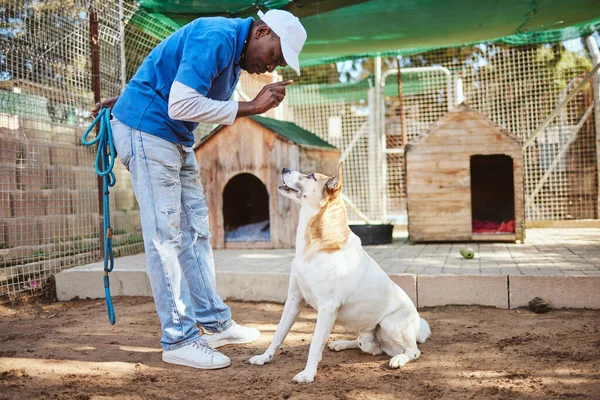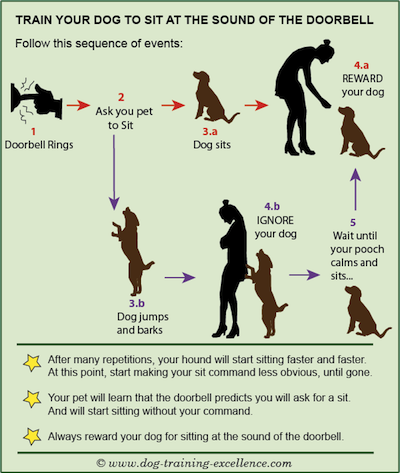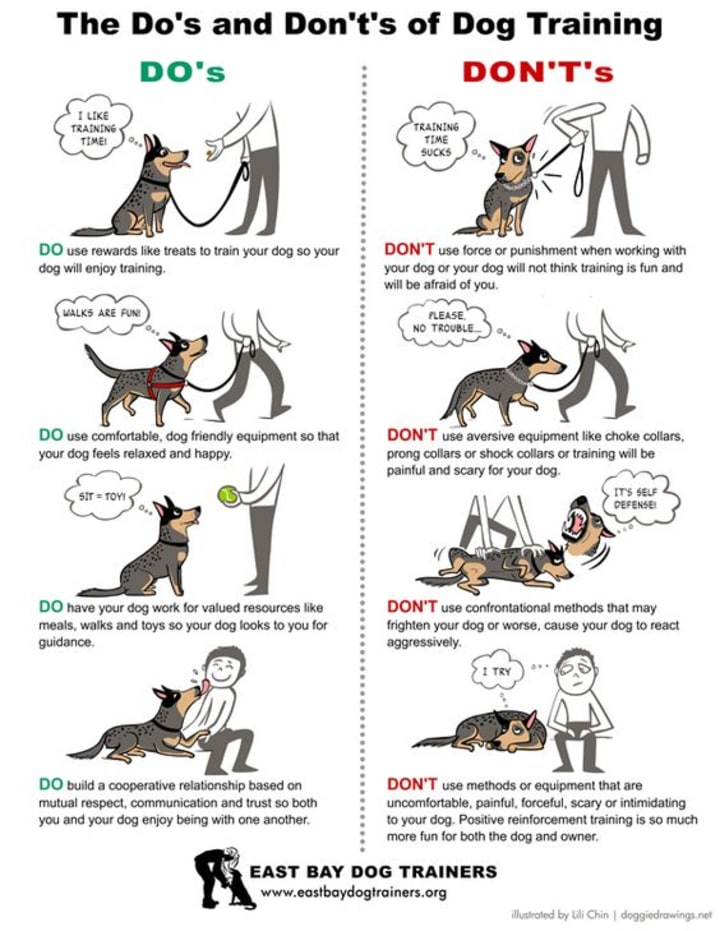Free Shipping On All Orders Over $150.
8 Effective Ways to Train Your Dog to Sit and Stay on Command
In the world of dog training, one fundamental command that every dog owner should prioritize is the dog training sit command. This simple yet effective command serves as a foundation for various other commands and behaviors, ensuring your furry friend is well-behaved and responsive. Whether you are a new puppy parent or have an older dog, mastering this command can significantly enhance your relationship with your pet and improve their overall behavior.
Using Ultrasonic Whistles for Dog Training

When it comes to teaching your dog the sit command, using tools like ultrasonic whistles can be incredibly beneficial. These devices emit sounds that are inaudible to humans but can be heard by dogs, making them a unique tool in your training arsenal.
Understanding Ultrasonic Whistles
Ultrasonic whistles are designed to produce high-frequency sounds that capture a dog's attention. The idea is to associate these sounds with specific commands or actions.
When training your dog, make sure to select a quiet and open space, free from distractions. Once you've established an environment conducive to learning, you can begin introducing the whistle alongside the command 'Sit.'
By blowing a short burst into the whistle just before issuing the verbal command, you create a clear auditory cue. Over time, your dog will start to correlate the sound of the whistle with the action of sitting down.
Benefits of Using Ultrasonic Whistles
- Focus and Attention: The high-pitched sound can help in capturing your dog's focus more effectively than verbal commands alone.
- Distance Training: If you're training your dog at a distance, the whistle allows you to communicate without shouting, which could scare your dog or disrupt others nearby.
- Versatility: You can use the same whistle for different commands, creating a consistent communication method between you and your dog.
With consistent practice, your dog will learn to respond promptly to the dog training sit command, leading to better obedience skills over time.
Incorporating Whistle Training into Your Routine
To effectively integrate whistle training into your regimen, consider setting aside time each day dedicated solely to this practice. Start with basic commands and gradually build complexity as your dog becomes more comfortable.
Over time, introduce additional commands, utilizing the whistle as your primary communication method. Always remember to reinforce good behavior with treats and praise, enhancing your training experience while strengthening your bond.
Clicker Training for Dogs

Another excellent method for teaching your dog the sit command is through clicker training. This technique employs positive reinforcement, which is widely recognized as one of the best methods to train dogs.
What is Clicker Training?
Clicker training involves using a small device that makes a distinct clicking sound when pressed. The sound serves as a marker, indicating to your dog that they have performed the desired behavior.
This method taps into the principles of operant conditioning, a learning process where consequences shape behavior. In this case, the click indicates a reward is coming, which excites and motivates your dog to repeat the behavior.
How to Implement Clicker Training
To start clicker training with the dog training sit command, follow these steps:
- Introduce the Clicker: Begin by allowing your dog to become familiar with the sound of the clicker. Click the device and immediately offer a treat. Repeat this several times until your dog associates the sound with receiving a reward.
- Command Introduction: Next, ask your dog to sit. As soon as they comply, click the clicker and give a treat. This reinforces the behavior and helps them connect the action with a reward.
- Practice Regularly: Consistency is key. Try to practice the command in various environments and situations to strengthen your dog’s understanding.
- Gradual Fading: As your dog becomes more proficient at sitting on command, you can gradually reduce the frequency of clicks and treats, eventually fading them out to maintain obedience based on your verbal command and hand signal alone.
The Benefits of Clicker Training
Using a clicker for training offers several advantages:
- Precision: The click sound provides immediate feedback, accurately marking the desired behavior.
- Positive Association: Dogs often find the clicker sound rewarding, making them eager to participate in training sessions.
- Adaptability: Clicker training is effective for various commands beyond just sitting, making it a great all-in-one training method.
Incorporating clicker training into your daily routine can yield impressive results in a relatively short amount of time.
Steps to Teach Your Dog to Sit

Teaching your dog to sit is not as complex as it may seem, but it does require patience and consistency. Here's a step-by-step guide to getting started.
Preparing for Training
Before diving into training, choose a calm and distraction-free environment. Having treats on hand can be beneficial; these rewards will motivate your dog during the training session.
Basic Commands and Techniques
- Get Your Dog's Attention: Stand in front of your dog and hold a treat close to their nose. When they focus on the treat, slowly raise it above their head. As they look up to follow the treat, their bottom will naturally lower.
- Introduce the Command: As your dog’s bottom touches the ground, say “Sit” clearly and confidently. Remember to use a firm yet gentle tone, as this will influence your dog’s response.
- Reward Immediately: As soon as your dog sits, click the clicker (if using) and provide a treat. This reinforces the behavior and lets them know they did something right.
- Repeat: Practice this process multiple times in short sessions. Keep the sessions fun and engaging to maintain your dog's interest and enthusiasm.
Building Distance and Duration
Once your dog reliably sits when asked, you can begin to work on extending the duration they remain seated and the distance between you and your dog. Gradually increase the time before rewarding, and practice asking your dog to sit from varying distances. This encourages them to obey the command regardless of their positioning.
Troubleshooting Common Issues
If your dog seems resistant or unsure:
- Ensure that you’re offering treats that they find particularly enticing.
- Avoid rushing through the process. Every dog learns at their own pace.
- Make training sessions short and enjoyable, incorporating playtime after each successful session.
By continuously practicing, your dog will develop the habit of obeying the dog training sit command.
Training Your Dog to Stay Still

Training your dog to stay still is another essential skill that complements the sit command. This command is crucial for keeping your dog safe and under control in various situations.
The Importance of Teaching 'Stay'
The ability to keep your dog stationary can be particularly useful in everyday scenarios. For example, when you need to stop at a crosswalk, enter a store, or hang out with friends in a park, having your dog stay put ensures they’re safe and respectful of their surroundings.
Step-by-Step Guide to Teaching 'Stay'
- Start with 'Sit': Have your dog sit first. Issue the command clearly, and wait for them to comply.
- Introduce the 'Stay' Command: With your dog seated, take a step backward while saying "Stay." If they remain seated, praise them gently and return to reward them with a treat.
- Gradually Increase Distance: Initially, only move a few steps away. As your dog gets more comfortable, increase the distance gradually, rewarding them for staying put.
- Extend Duration: Begin to increase the time before returning to them for a reward. This process helps them learn patience and self-control.
Reinforcing the 'Stay' Command
Reinforcement is critical for successful training. Encourage your dog each time they remain in place for longer durations or greater distances. Eventually, you can start to remove treats and rely on praise alone, emphasizing their achievements in holding the position.
Challenges to Watch Out For
As with any training, challenges may arise:
- Distractions: Start in a quiet space to avoid overwhelming your dog. As they improve, gradually introduce more distractions.
- Excitement: Some dogs may struggle with staying still due to excitement. In such cases, ensure they’ve had enough exercise beforehand to help them focus better.
Building on the sit command is instrumental in helping your dog learn how to stay still. Through consistent practice, your dog will master both commands effectively.
Steps to Teach Your Dog to Stay Still

To successfully teach your dog to stay still, follow these straightforward steps:
Calling Your Dog to You
Begin by calling your dog to you and asking them to sit. It’s vital that they understand the sit command first before moving on to stay.
Introducing the 'Stay' Command
With your dog sitting beside you, extend your hand palm outwards and say "Stay" firmly. Then, take a small step back. If your dog remains seated, reward them immediately.
Gradual Progression
Continue to gradually increase the distance and duration of the 'stay' command. Remember to praise and reward your dog consistently for their success, reinforcing the behavior you want.
Practicing Regularly
Incorporate regular practice into your daily routine, maintaining an upbeat and positive atmosphere throughout the training sessions. The more your dog practices, the more proficient they will become.
Tips When Teaching Your Dog to Stay

While practicing the stay command, it's essential to keep several key tips in mind to ensure effective training:
Be Patient and Consistent
Patience is paramount in dog training. Each dog learns at its own pace, so avoid becoming frustrated if progress isn’t as rapid as you’d like.
Use Positive Reinforcement
Utilizing treats or praise can significantly enhance your dog’s willingness to perform. Always remember that positive reinforcement builds a stronger connection between you and your dog.
Keep Sessions Short
Short and engaging training sessions go a long way in preventing fatigue and boredom. Aim for several brief sessions throughout the day rather than one prolonged period.
Teaching Your Dog to Wait Quietly and Patiently

Training your dog to wait quietly and patiently can significantly improve your outings together. This command is especially useful when you need to step away momentarily, knowing your dog will remain still and calm.
The Concept of the 'Wait' Command
The 'wait' command teaches your dog to remain in place until given further instruction. You can utilize this command during various everyday activities, such as leaving your dog in a parked car or entering a shop.
Teaching the 'Wait' Command
- Initial Setup: Begin this training similarly to the sit command. Ask your dog to sit, and once they are settled, introduce the 'wait' command.
- Slowly Step Away: Take a step back while saying "Wait," then return to your dog and reward them for staying put.
- Increase the Challenge: Gradually increase the distance and duration, similar to the stay command, but emphasize that they must remain silent and still during the wait.
Reinforcing Calm Behavior
Throughout this training, it’s crucial to reinforce calm behavior consistently. If your dog exhibits signs of impatience, remain patient and encourage them to settle back down.
Monitoring Progress
Keep an eye on your dog's progress. Regularly assess how well they respond to the wait command and celebrate their successes to encourage continued learning.
Teaching Your Dog to Sit on Two Legs

An advanced trick many dog owners enjoy teaching their pets is to sit on two legs. This fun command can showcase your dog’s agility and intelligence while providing a delightful show to friends and family.
Approach to Teaching This Trick
- Initial Positioning: Start with your dog in a standing position. Hold a treat above their nose, coaxing them to rear onto their hind legs while focusing on the treat.
- Introduce the Command: As your dog balances on two legs, say “Sit up” or a command of your choosing, offering praise and a reward once they successfully balance.
- Gradual Extension: Once your dog starts to grasp the concept, increase the time they remain upright, rewarding them for their persistence.
Safety Considerations
While teaching your dog to sit on two legs can be entertaining, it’s important to ensure their safety throughout the process. Always monitor their movements and avoid pushing them too hard, ensuring they’re comfortable and confident with every attempt.
A Fun Variation
You can also incorporate creative elements into this training by adding a playful spin. For instance, as your dog learns to sit up, encourage them to spin in circles while balancing. This keeps the training lively and engaging for both you and your dog.
Teaching Your Dog to Sit Using Food

Food can be a powerful motivator in the realm of dog training. Many trainers opt to use tasty treats to teach their dogs commands, including the essential sit command.
Choosing the Right Treats
Selecting the right treats is crucial. Look for small, soft, and flavorful options that your dog loves. Remember, the treat must be appealing enough to maintain your dog's interest throughout the training session.
Using Treats Effectively
- Show the Treat: Start by showing your dog the treat. Ensure they see and smell it, making them eager for it.
- Position the Treat: Hold the treat close to their nose and slowly move it upward. As your dog looks up at the treat, their bottom should naturally lower to the ground.
- Combine with Verbal Command: When your dog sits, immediately provide the treat while saying "Sit." This combination reinforces the behavior, helping them learn that they receive treats when they obey commands.
Advancing the Learning Process
Once your dog consistently responds to the food lure, begin to phase out the treats gradually. Instead, use verbal praise and affection as rewards, encouraging your dog to follow your commands without relying solely on treats.
Celebrating Progress
Always celebrate your dog’s accomplishments, no matter how small. Positive reinforcement goes a long way in building confidence and encouraging them to continue learning.
Using Clicker Training to Teach Dogs to Sit Still

Clicker training can also be applied to effectively teach your dog to sit still and remain patient. This method fosters a strong bond while teaching reliable behavior patterns.
How to Combine Clicker Training with the Sit Command
- Getting Started: Similar to previous techniques, begin by asking your dog to sit. Once they do, immediately click and reward.
- Introducing Stillness: After mastering sitting, introduce the concept of remaining still. Simply ask your dog to sit, and reward them for staying put while you gradually increase the duration.
- Clicking for Patience: Every time your dog holds their position for an extended time, click and treat them. This reinforces the idea that remaining still yields rewards.
Ensuring Effective Communication
Maintaining clear and consistent communication is vital for successful training. Use the clicker as a distinctive signal so your dog understands exactly what behavior earns them rewards.
Troubleshooting Training Challenges
As with all training, challenges may arise. If your dog struggles to remain still, shorten the duration and instead reward them for smaller increments of time. Alternatively, practice in quieter environments to minimize distractions.
Teaching Your Dog to Sit Left and Right

Teaching your dog to sit left and right is an exciting and interactive trick that encourages mental stimulation while deepening your bond.
The Basics of Teaching Directional Commands
- Starting Position: Begin by placing your dog in front of you. Use treats to guide them in different directions.
- Introducing the Commands: As you lead them left, say “Left” and as they turn right, say “Right”. Click and reward them when they successfully follow your direction.
- Increasing Complexity: Once your dog masters the basics, challenge them by mixing up the commands. Reward them for correctly responding to both left and right cues.
Making It Engaging and Fun
Incorporate games into this training by turning it into a playful activity. Use toys or other stimuli to foster engagement and motivation, turning training sessions into fun-filled bonding opportunities.
Celebrating Successes
Remember to celebrate each little victory. As your dog learns directional commands, they’ll gain confidence, leading to a more enthusiastic training experience.
Training Your Dog to Ride on a Motorbike

For adventurous dog owners, teaching your dog to ride on a motorbike can be an exhilarating experience. However, safety should always come first.
Preparing Your Dog for Riding
Before introducing your dog to this experience, ensure they’re comfortable with being around vehicles. Gradually allow them to explore and familiarize themselves with the bike.
Step-by-Step Process
- Start Slow: Begin by having your dog sit beside the parked bike. Offer treats and praise as they show comfort.
- Introduce the Seat: Once your dog is relaxed, encourage them to hop onto the seat while you reward them.
- Short Rides: Start with short rides around your yard or driveway, gradually increasing the distance as your dog becomes more accustomed to the sensation.
Prioritizing Safety
Always prioritize safety when riding with your dog. Invest in a secure harness or special dog carrier designed for motorcycle travel, ensuring your dog is safely secured during rides.
Enjoying the Journey Together
Riding with your dog can be a thrilling experience that strengthens your bond. Allow yourself to relish the joy of exploring new places together as you embark on adventures on two wheels.
Teaching Your Dog to Balance

Teaching your dog to balance can be an exciting exercise that engages their physical and mental abilities. This skill can be useful for agility training and overall coordination.
Getting Started with the Balance Training
Begin by introducing your dog to low obstacles, such as a sturdy plank or a balance ball designed for canine training.
Step-by-Step Instructions
- Encouragement: Start by encouraging your dog to explore the balance object. Use treats and praise as motivation.
- Gradual Progression: Once your dog becomes comfortable, encourage them to walk across the obstacle. Reinforce their efforts with rewards as they navigate the surface.
- Increasing Difficulty: As your dog gains confidence, gradually increase the height and complexity of the balance exercises, ensuring safety at each stage.
Fostering Confidence and Coordination
Balancing exercises promote both confidence and coordination in your dog. Celebrate their progress as they develop new skills, integrating these exercises into your daily routine.
Teaching Your Dog to Get in the Car

Encouraging your dog to get in the car can be essential for trips and vet visits. This skill helps eliminate stress for both you and your dog.
Creating a Positive Environment
Start by making the car inviting. Place treats and toys inside to encourage exploration while keeping the doors open for easy access.
Step-by-Step Process
- Introducing the Car: Allow your dog to sniff and explore the vehicle while offering encouragement and treats.
- Encouraging Upward Motion: Use treats to guide your dog into the seat, rewarding them as they comply.
- Regular Practice: Repeatedly practice getting in and out of the car, ensuring your dog feels comfortable and confident.
Enjoying the Ride
As your dog becomes more accustomed to getting in and out of the car, incorporate short trips to enjoyable destinations. This ensures that they associate car rides with positive experiences.
Conclusion
Successfully training your dog to follow commands such as the dog training sit command requires dedication, patience, and consistency. By employing various techniques such as clicker training, using treats, and introducing engaging challenges, you can foster a strong bond with your furry companion while teaching essential skills. Embrace the journey of training, celebrate progress, and remember to enjoy the shared moments with your beloved pet. Happy training!
0 comment
Be the first to comment